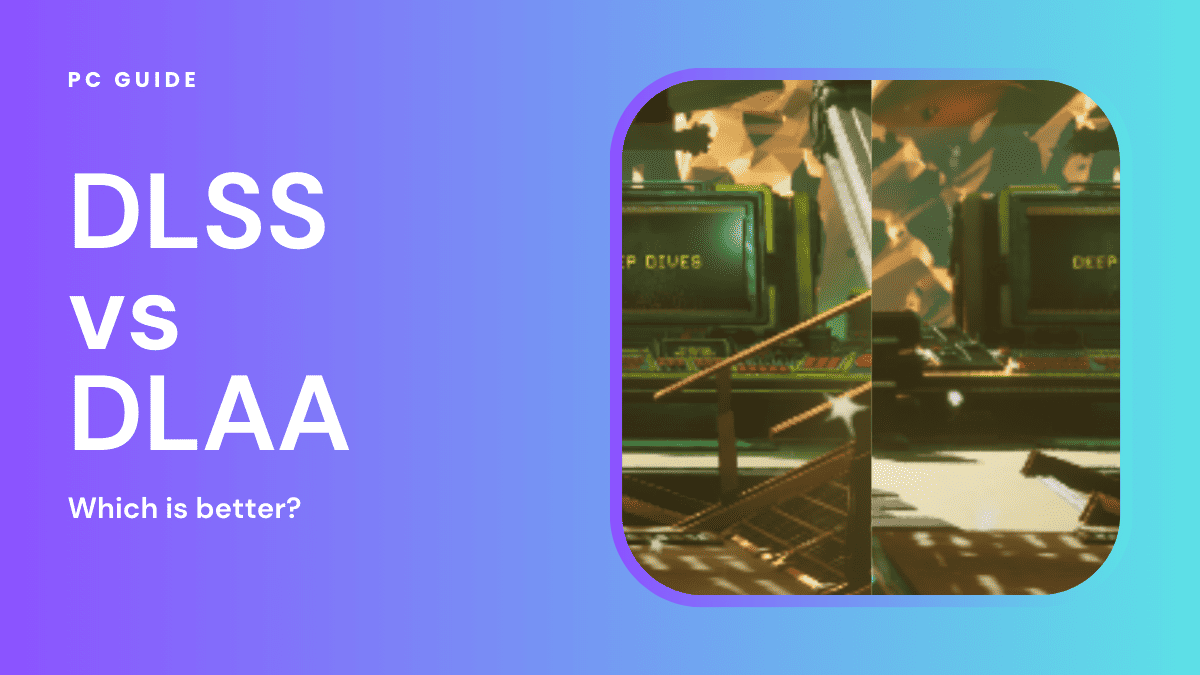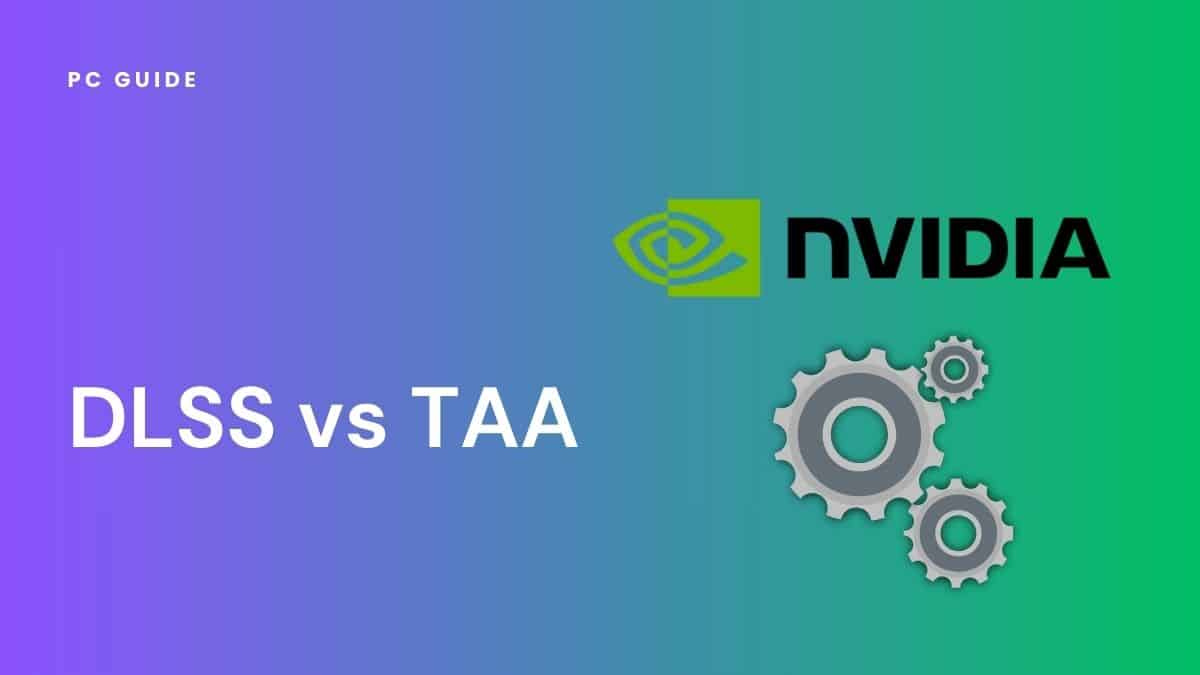DLSS vs DLAA: Understanding the tech behind the visuals

Table of Contents
NVIDIA has been revolutionizing how we enjoy games through its graphics cards for several years. In an attempt to do so, it has developed various techniques to improve video game graphics and frames per second (FPS). So, DLSS vs. DLAA, which one is better?
The most recent developments, DLSS and DLAA, come with the use of Artificial Intelligence (AI). Both techniques can help improve visuals, but you cannot use both simultaneously. If you use DLSS, you cannot use DLAA, and if you use DLAA, DLSS will be auto-disabled.
Prime Day is finally here! Find all the biggest tech and PC deals below.
- Sapphire 11348-03-20G Pulse AMD Radeon™ RX 9070 XT Was $779 Now $739
- AMD Ryzen 7 7800X3D 8-Core, 16-Thread Desktop Processor Was $449 Now $341
- ASUS RTX™ 5060 OC Edition Graphics Card Was $379 Now $339
- LG 77-Inch Class OLED evo AI 4K C5 Series Smart TV Was $3,696 Now $2,796
- Intel® Core™ i7-14700K New Gaming Desktop Was $320.99 Now $274
- Lexar 2TB NM1090 w/HeatSink SSD PCIe Gen5x4 NVMe M.2 Was $281.97 Now $214.98
- Apple Watch Series 10 GPS + Cellular 42mm case Smartwatch Was $499.99 Now $379.99
- ASUS ROG Strix G16 (2025) 16" FHD, RTX 5060 gaming laptop Was $1,499.99 Now $1,274.99
- Apple iPad mini (A17 Pro): Apple Intelligence Was $499.99 Now $379.99
*Prices and savings subject to change. Click through to get the current prices.
In this article, we'll learn more about DLSS vs. DLAA, and which is better for your needs.
DLSS vs. DLAA: Understanding the tech behind the visuals
When it comes to enhancing your video game experience, NVIDIA’s deep learning technologies like Deep Learning Super Sampling (DLSS) and Deep Learning Anti-Aliasing (DLAA) are at the forefront. But what sets them apart, and which one should you opt for? Let’s dive in.
What is DLSS?
DLSS, or Deep Learning Super Sampling, is a proprietary technology developed by NVIDIA. It uses deep learning neural networks to upscale lower-resolution images in real-time. The primary goal here is to improve frame rate while maintaining or even enhancing the image quality. The latest version, NVIDIA DLSS 3.5, boosts your FPS and offers ray reconstruction capabilities for better image quality. This version also incorporates DLAA, adding another layer to its functionality.
DLSS modes for different needs
DLSS offers various modes, such as quality mode, that allow you to tailor your experience. Whether you’re playing Elder Scrolls Online or any other GeForce RTX-supported game, you can adjust the settings to achieve high FPS and the best image quality possible.
What is DLAA?
Deep Learning Anti-Aliasing, or DLAA, focuses solely on image quality, specifically on smoothing out jagged edges in graphics. Unlike DLSS, DLAA does not involve upscaling and therefore doesn’t contribute to improving your frame rate. It uses deep learning to intelligently eliminate aliasing artifacts, making the visuals crisp and clear.
When to use DLAA
If you’re not concerned about frame rates and are looking for better image quality, then DLAA might be your go-to option. It’s particularly useful in games where native resolution is more critical than high FPS.
Tech comparison: TAA vs. NVIDIA DLAA
It’s worth noting that DLAA is often compared to traditional antialiasing methods like TAA (Temporal Anti-Aliasing). However, NVIDIA’s DLAA offers a more advanced approach to eliminating jagged edges, providing an overall better visual experience.
By understanding the strengths and limitations of both DLSS and DLAA, you can make an informed decision to enhance your gaming experience. Whether it’s high FPS or better image quality you’re after, NVIDIA’s deep learning technologies have got you covered.
Is DLAA better than DLSS?
Both DLSS and DLAA offer certain advantages over each other. For instance, DLSS can improve performance, whereas DLAA can improve visual quality at your set resolution.
Additionally, DLSS is not limited to a specific resolution or hardware configuration. The technology adapts to different gaming setups, providing flexibility for users with varying hardware capabilities.
DLAA is also not limited to a specific resolution. However, you will need a robust hardware setup to back up the technology and use it optimally.
Hence, whether DLAA is better than DLSS depends on your system's hardware capabilities. If your CPU and GPU are powerful and can improve visual quality with DLAA without impacting FPS rates.
DLSS vs. DLAA: Which is the better choice for Cyberpunk 2077?
When Cyberpunk 2077 initially hit the market, it faced criticism for its subpar graphics. However, the game has seen significant visual improvements, especially with the introduction of support for DLSS 3.5. This version of NVIDIA’s Deep Learning Super Sampling allows for enhanced ray reconstruction and Ray Tracing capabilities, all while maintaining solid FPS ranges. This makes it an ideal choice for those using less powerful NVIDIA GPUs like the RTX 3070, RTX 3070 Ti, or RTX 3080.
Upscaling and GPU performance in Cyberpunk 2077
The upscaling component of DLSS is particularly useful for improving performance on less powerful GPUs. It essentially allows for higher frame rates while still delivering maximum image quality.
However, if you’re lucky enough to have a system equipped with a high-performance NVIDIA GPU like the 4090, DLAA (Dynamic Learning Anti-Aliasing) might be the better option for you. DLAA focuses on providing the best visuals at full resolution, which is achievable with a high-end GPU.
DLSS vs. DLAA: The verdict for Modern Warfare 2
When it comes to Modern Warfare 2 (MW2), the impact of both DLSS and DLAA on image quality is less pronounced. Players have reported that neither of NVIDIA’s technologies has significantly improved the graphics. Issues like motion blur and some level of blurring persist, regardless of whether DLSS or DLAA is enabled.
Depth of field and image quality in MW2
While DLSS aims for higher frame rates and includes the possibility of an ultra-quality mode, DLAA focuses solely on image quality, particularly in areas like depth of field. However, in the case of MW2, neither seems to make a substantial difference.
So, the choice between DLSS and DLAA ultimately boils down to your system’s hardware capabilities and your personal gaming preferences. Whether you’re eagerly awaiting the upcoming DLSS implementation in a game like Deep Rock Galactic or Baldur's Gate, understanding the strengths and limitations of these technologies can help you make an informed decision.
DLSS vs. DLAA: final verdict
The choice is clear. If you have a powerful GPU card and want to improve image quality at the target resolution and framerate, DLAA should be your ideal option. But if your system can't keep up with the game’s target resolution and framerate requirements, go with DLSS.
It is also worth noting that DLSS and DLAA are specific to NVIDIA graphics cards. Hence, if you are using other graphics cards like AMD, there are other options like AMD Super Resolution and Intel Super Sampling.

